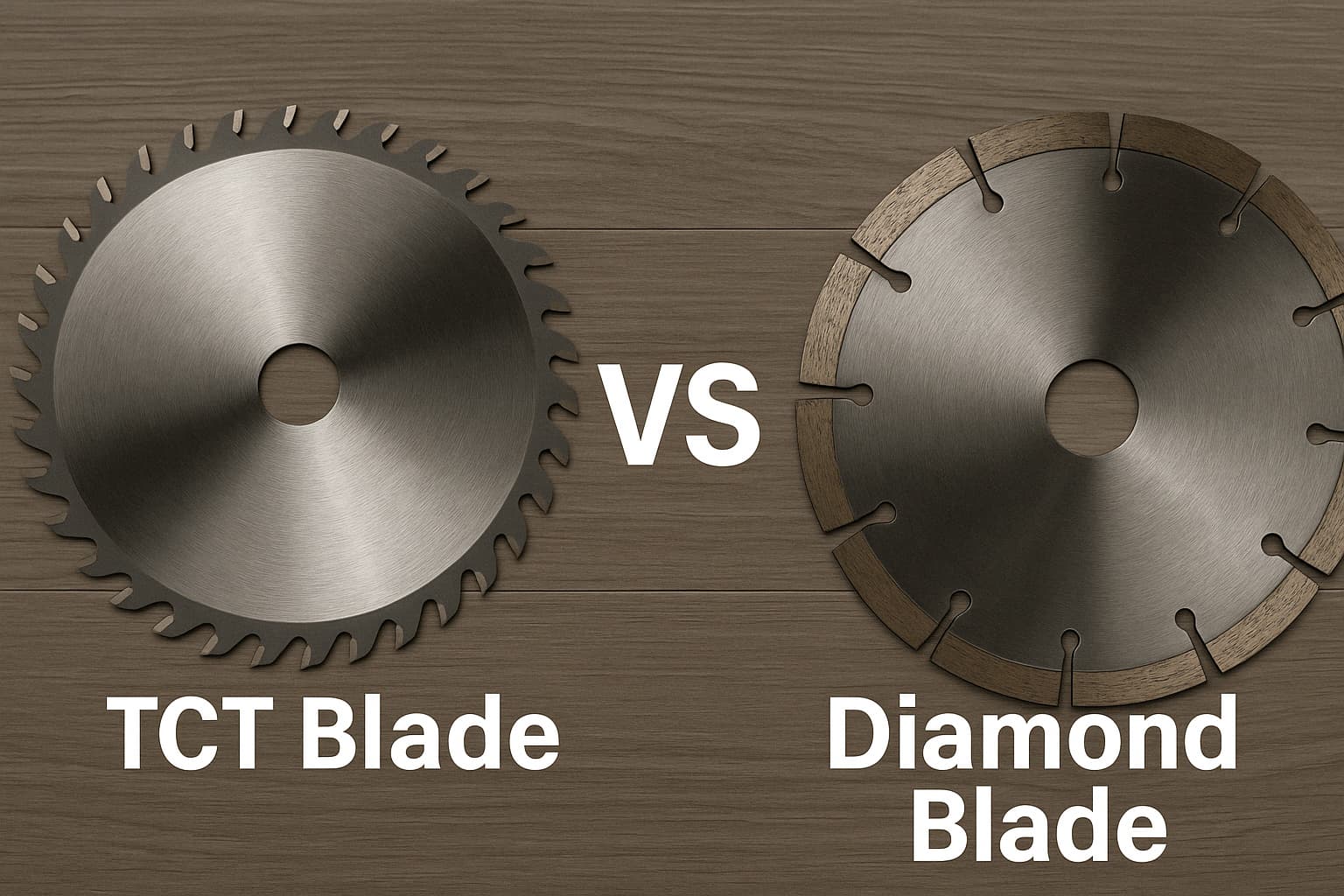TCT Blades vs Diamond Blades – What’s the Difference?
If you’re shopping for cutting blades and wondering whether you need TCT or Diamond, you’re not alone. These two blades are built for very different jobs — and using the wrong one can waste time, ruin material, or burn out your tool.
Let’s break down the key differences so you always get the cleanest cut.
🔹 What is a TCT Blade?
TCT stands for Tungsten Carbide Tipped. These circular saw blades are used primarily for cutting wood and wood composites, but can also handle some plastics and aluminium.
✔ Great for:
-
Timber, MDF, plywood
-
Laminate flooring
-
Clean, splinter-free cuts
-
High-speed circular saws, mitre saws, chop saws
🔹 What is a Diamond Blade?
Diamond blades are designed for cutting hard, abrasive materials. Instead of sharp teeth, they use synthetic diamonds bonded to the edge of the blade.
✔ Great for:
-
Porcelain & ceramic tiles
-
Concrete, brick, stone
-
Hard natural materials
-
Angle grinders, tile cutters, floor saws
🔍 Key Differences
| Feature | TCT Blade | Diamond Blade |
|---|---|---|
| Cutting method | Carbide teeth slice wood | Diamonds grind hard surfaces |
| Best for | Wood, MDF, plastic | Tile, concrete, masonry |
| Tool used with | Circular saws, mitre saws | Grinders, tile cutters, petrol saws |
| Edge style | Toothed | Continuous, turbo, or segmented rim |
| Cooling needed | Typically dry cut | Often used wet to reduce heat |
⚠️ Using the Wrong Blade = Trouble
-
Using a TCT blade on tiles = chipped edges or broken blade
-
Using a diamond blade on wood = burning, binding, kickback risk
Always match the blade to the material and the tool you're using.
🛠️ Choose the Right Blade with ClassicPro
At ClassicPro, we stock both high-quality TCT blades for wood and diamond blades for tile, stone, and concrete — all with trade-grade performance and great value.
👉 Explore TCT Blades
👉 Explore Diamond Blades
📦 Fast UK Shipping | 🧰 Built for Pros | 🪚 Precision Cutting Tools

